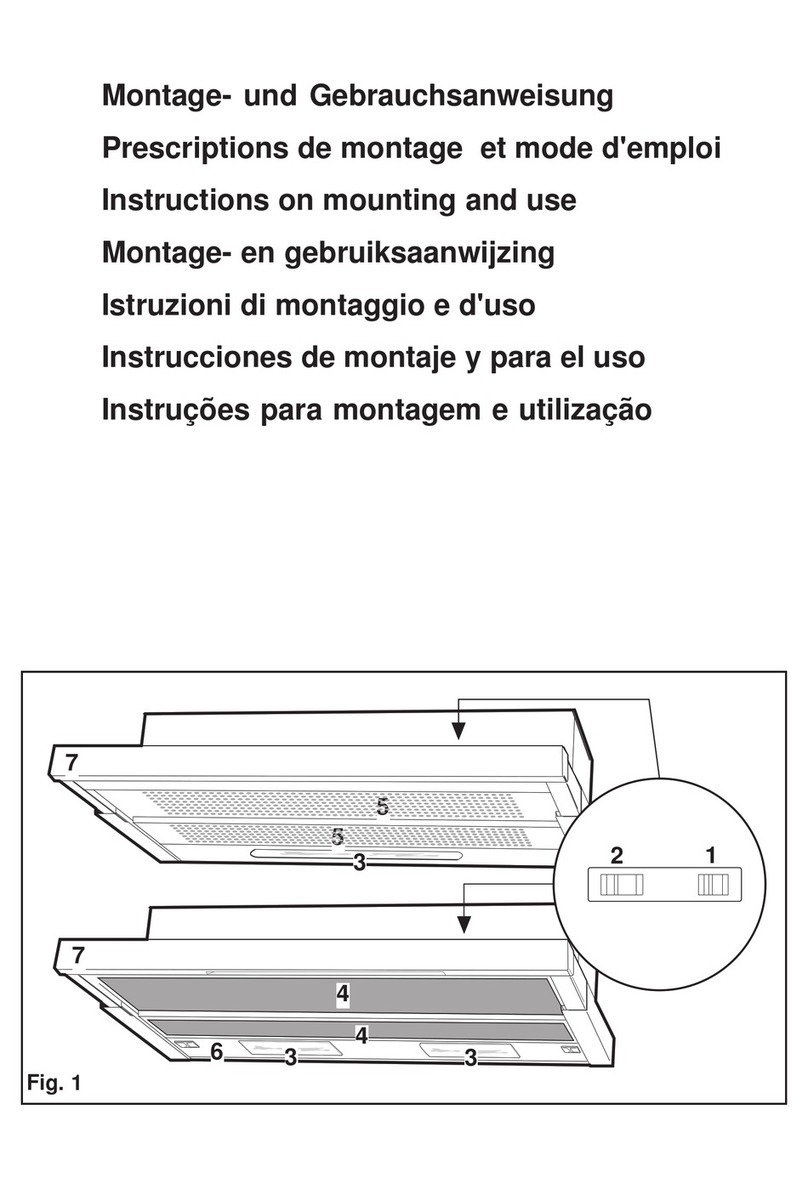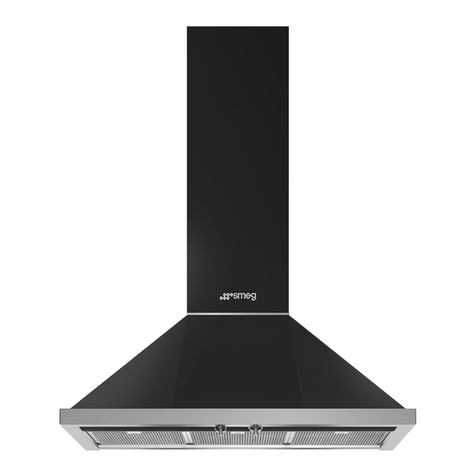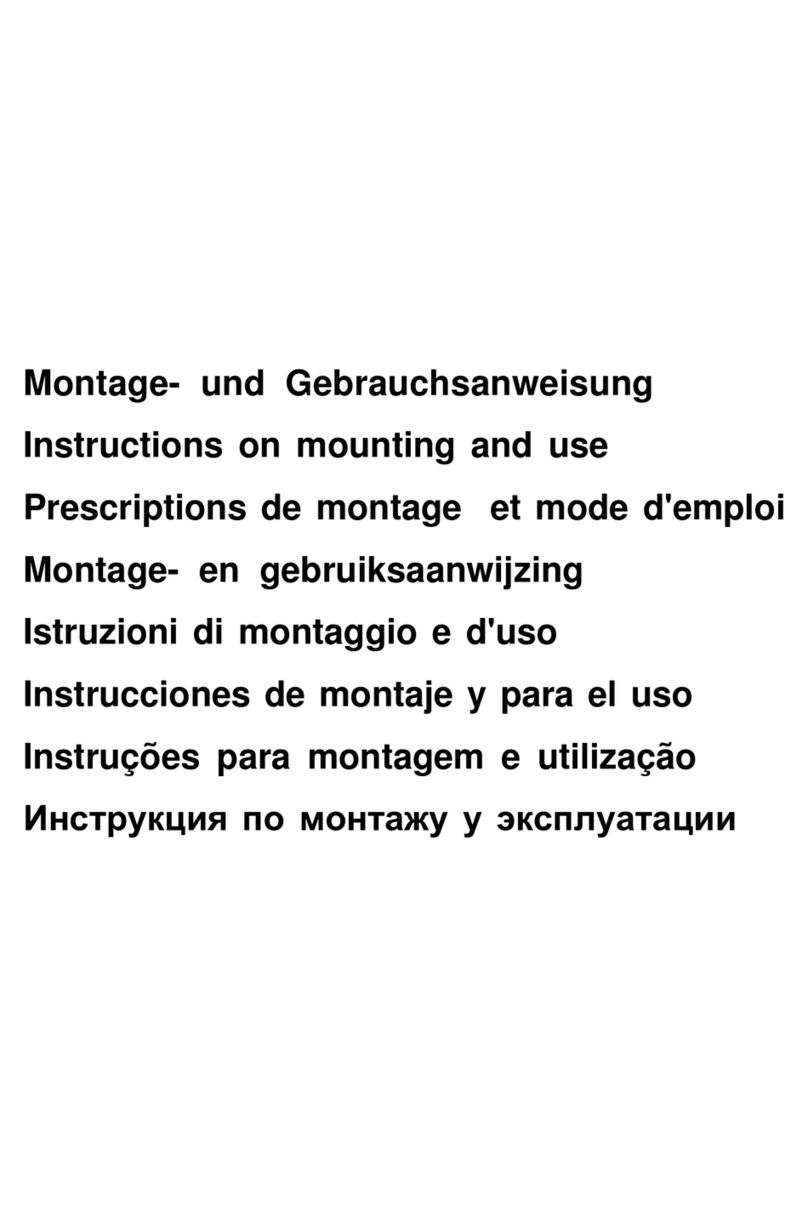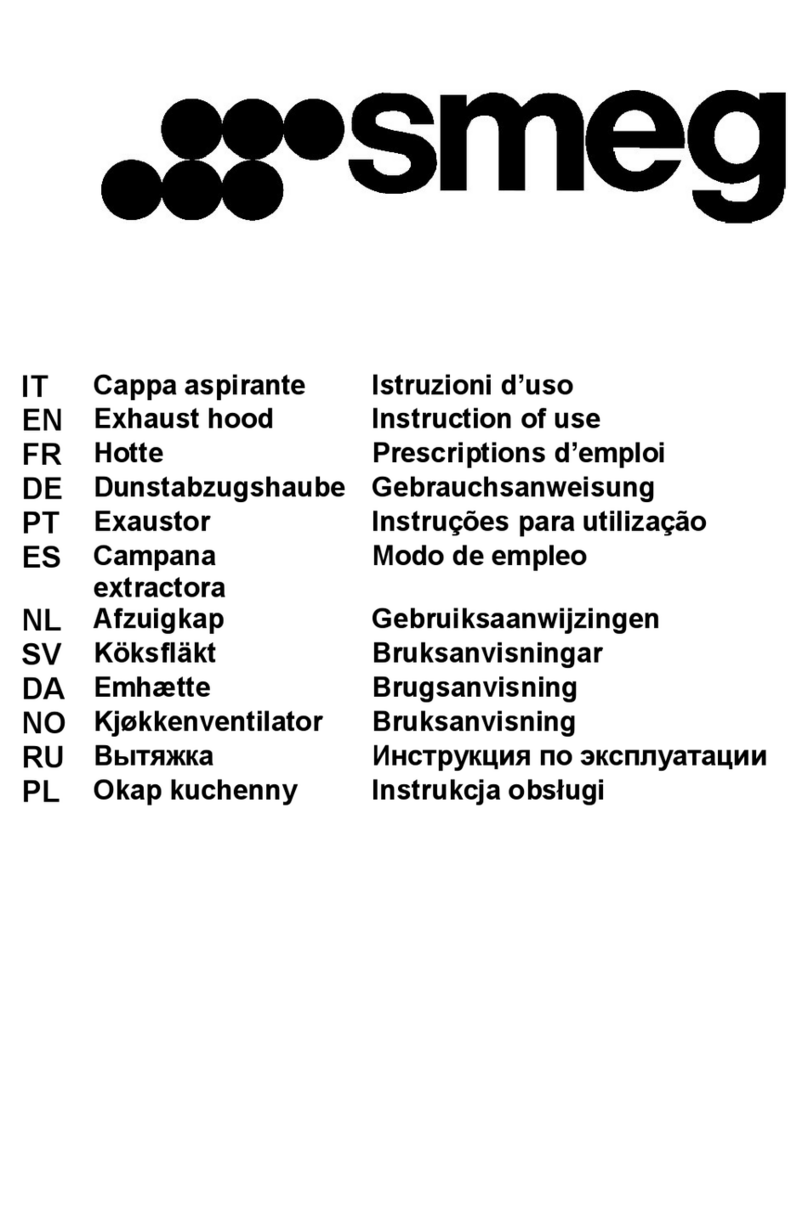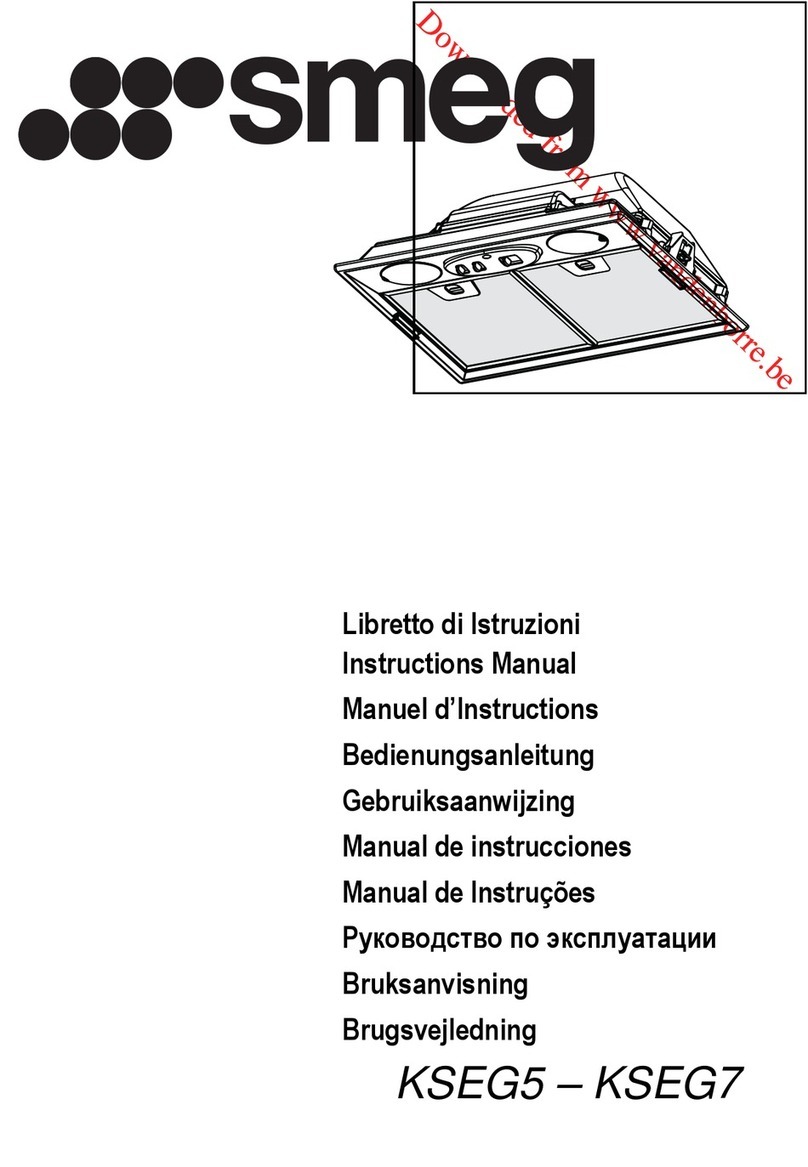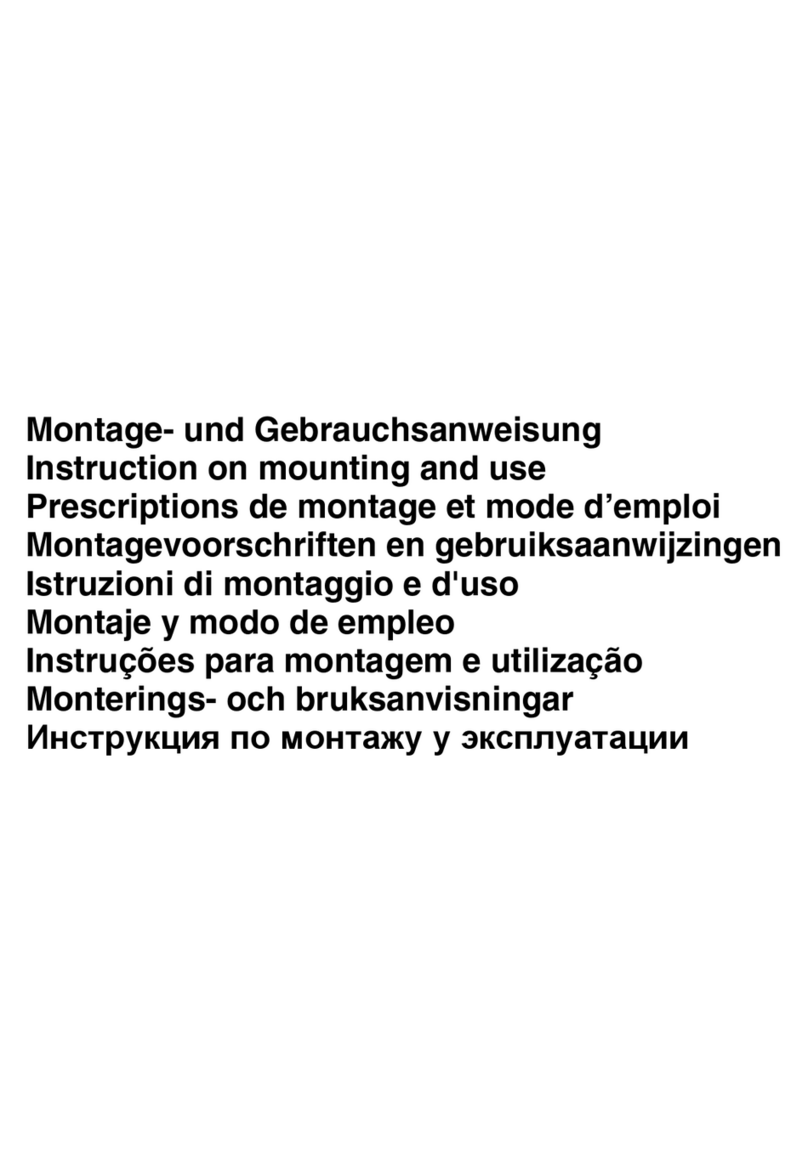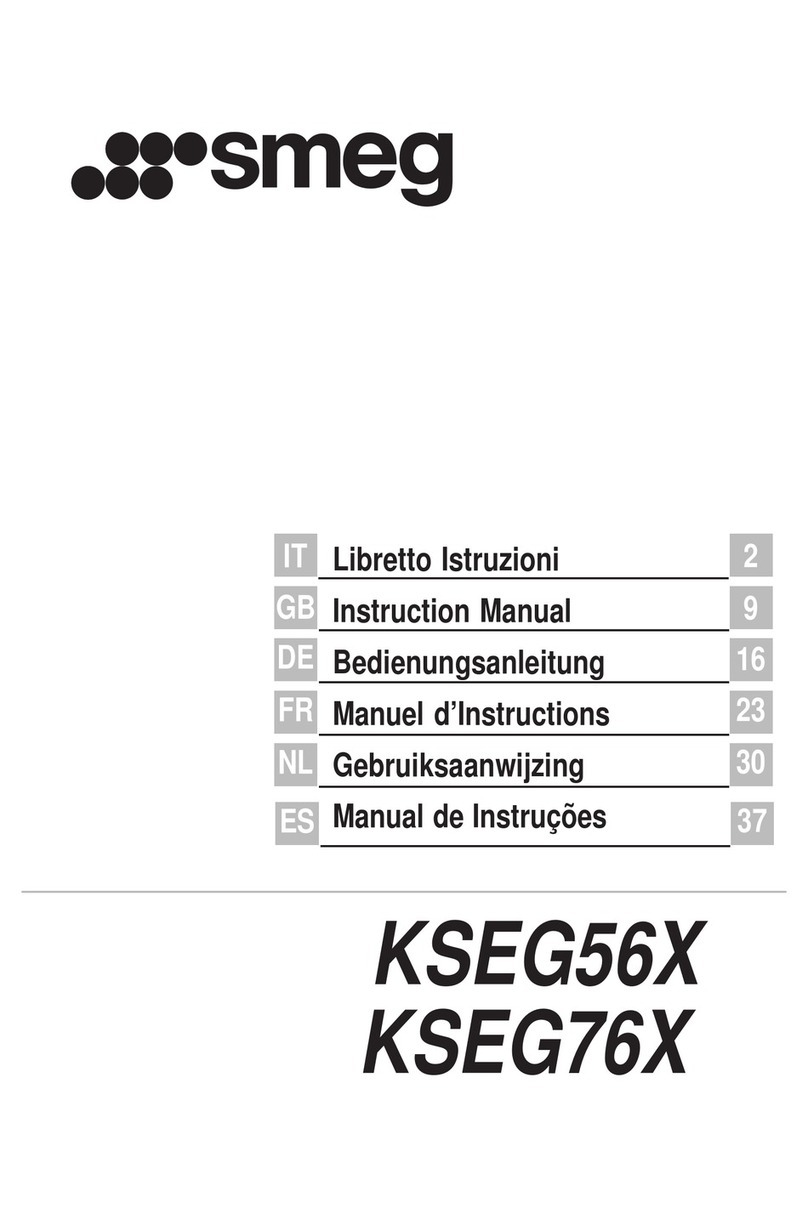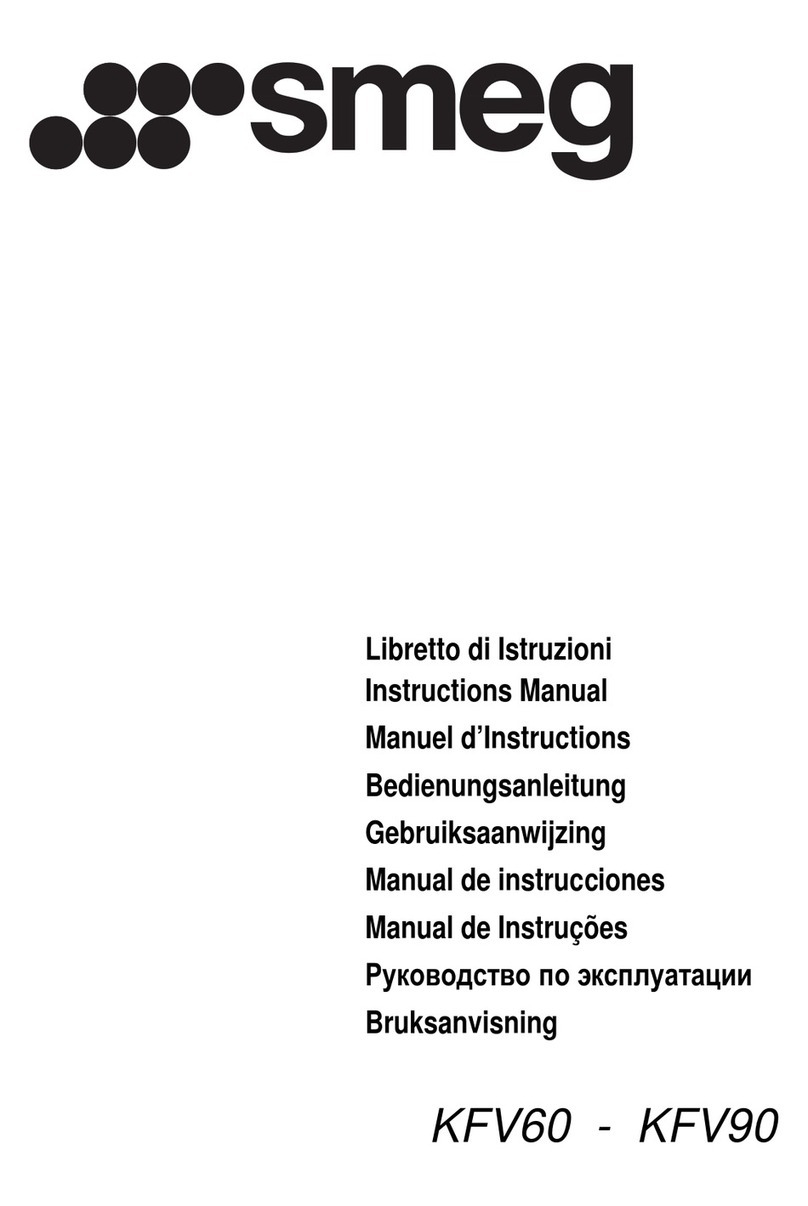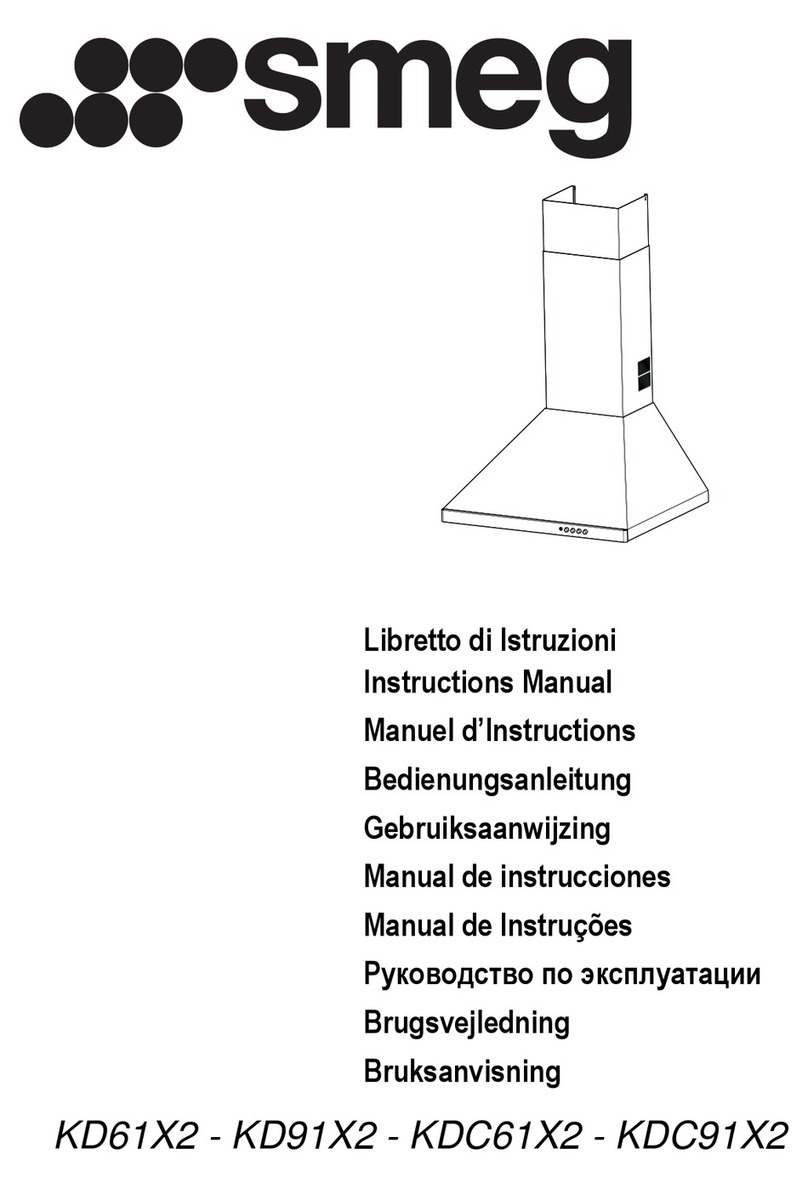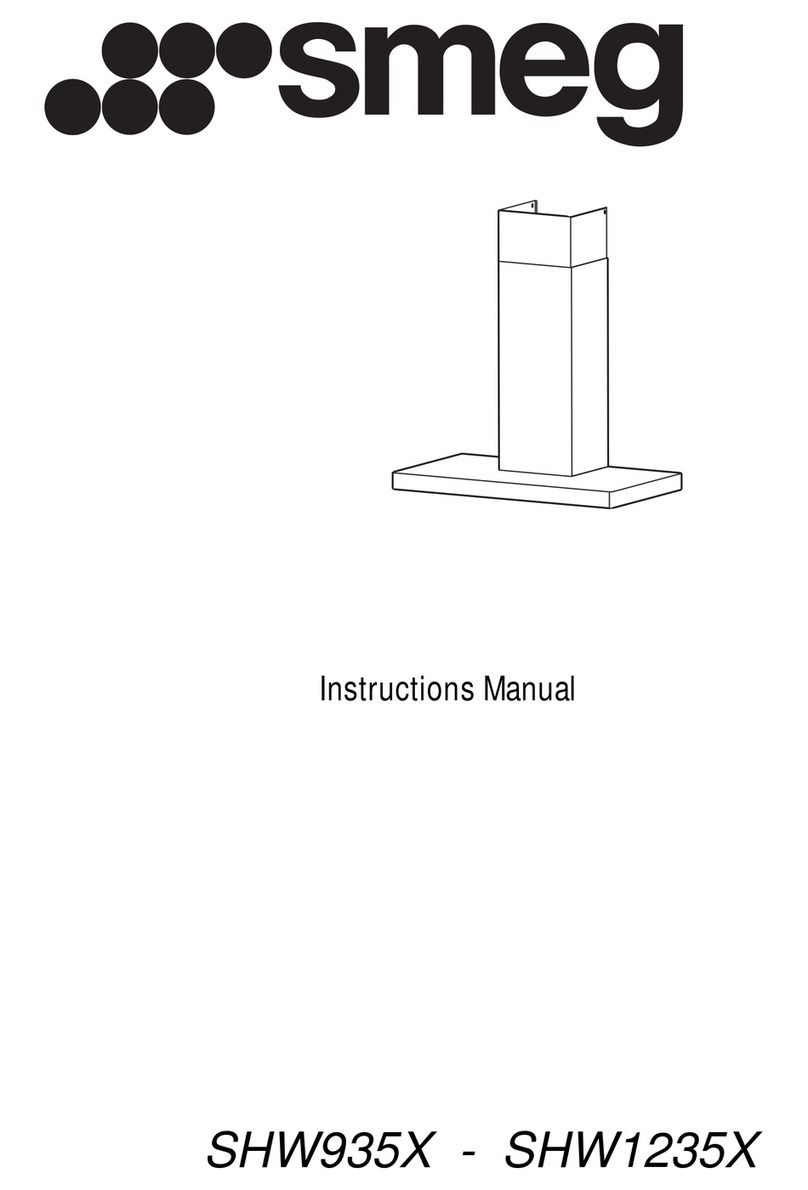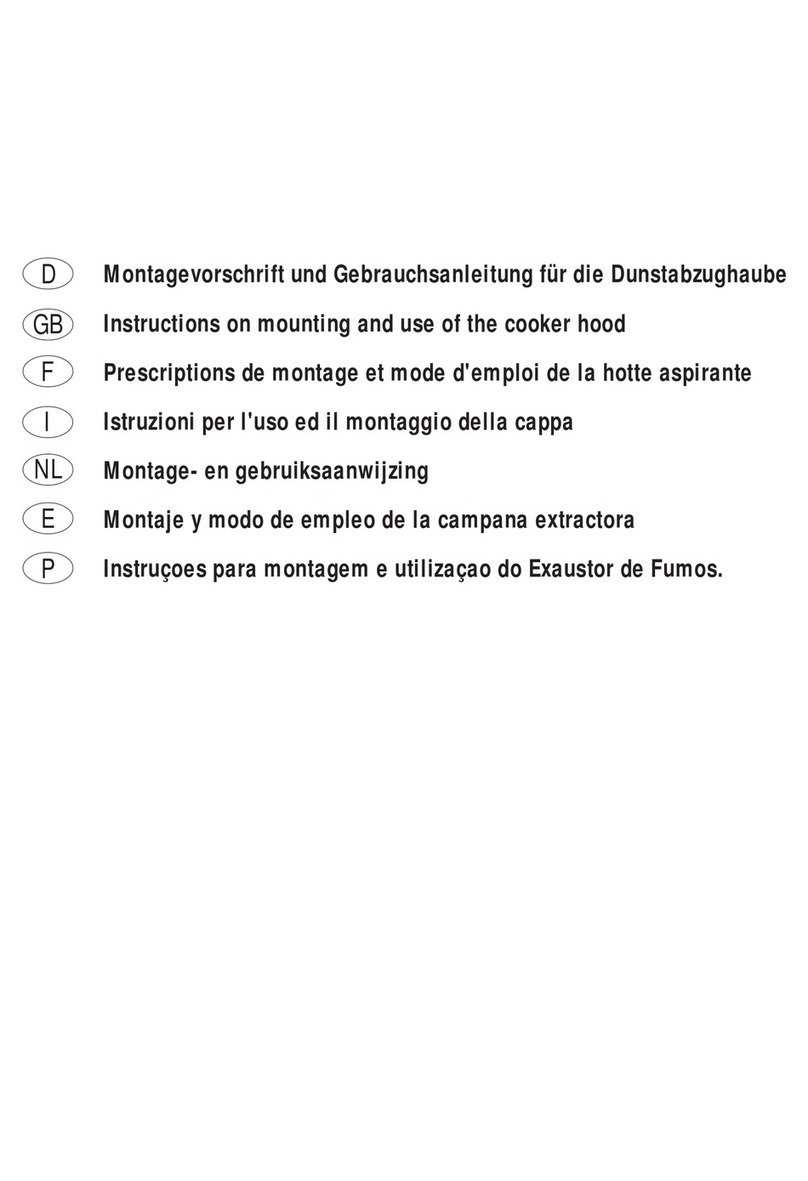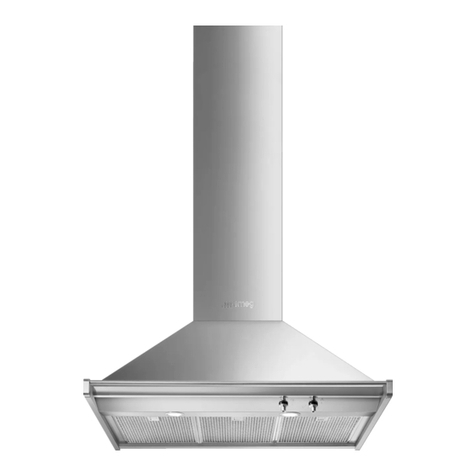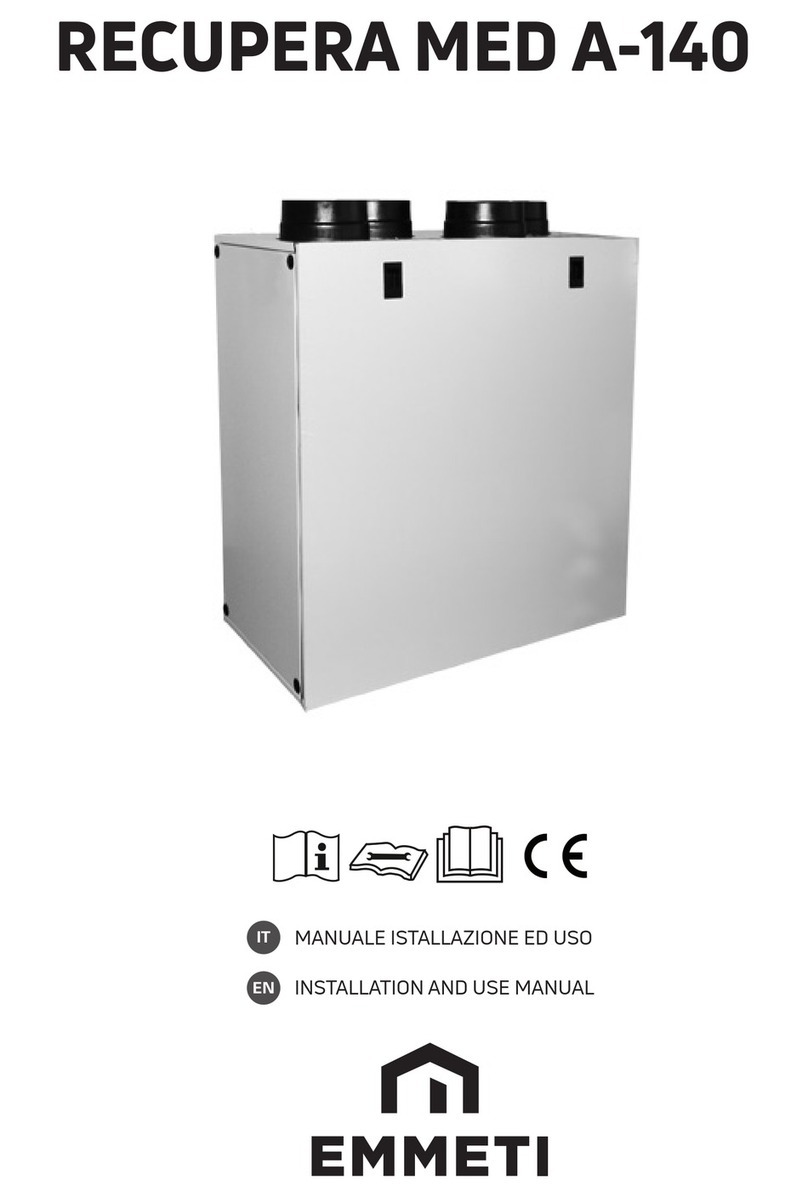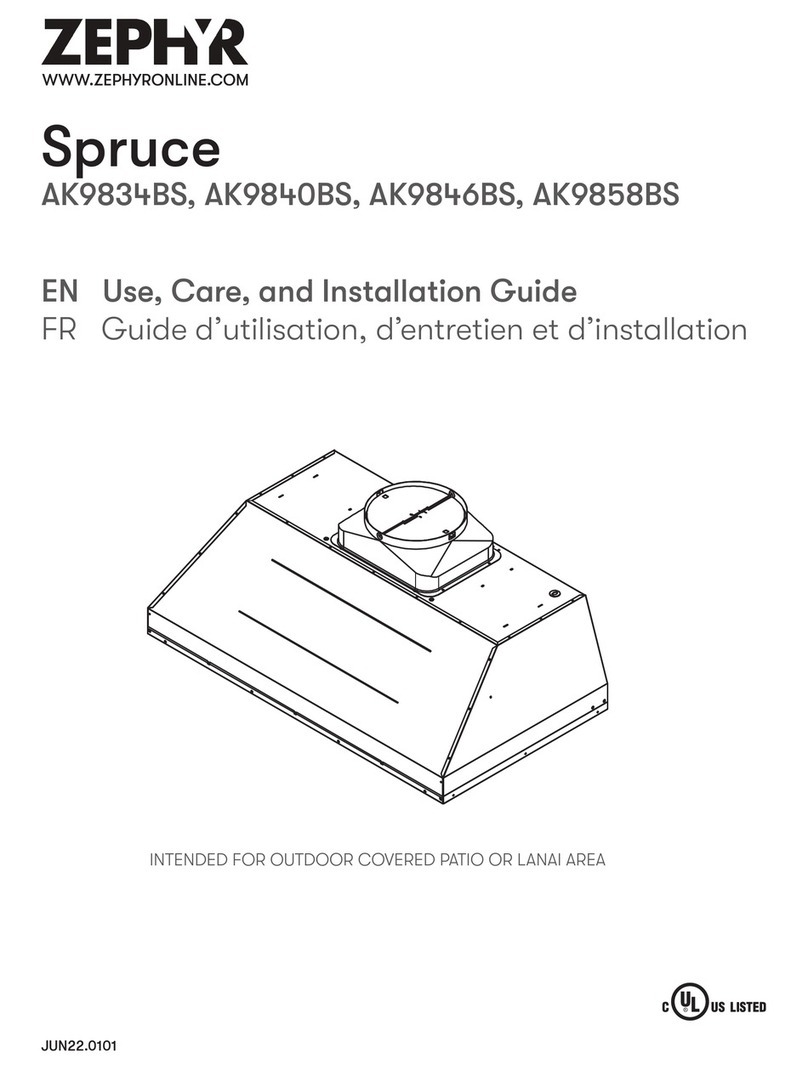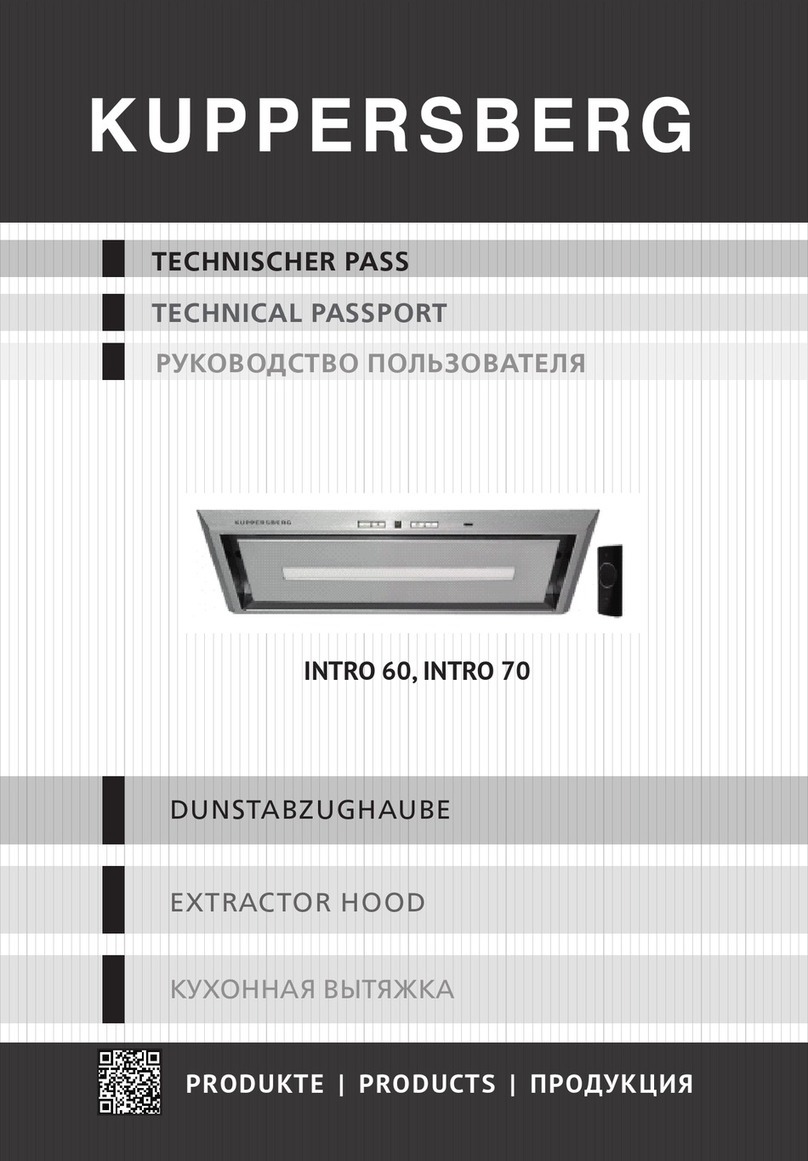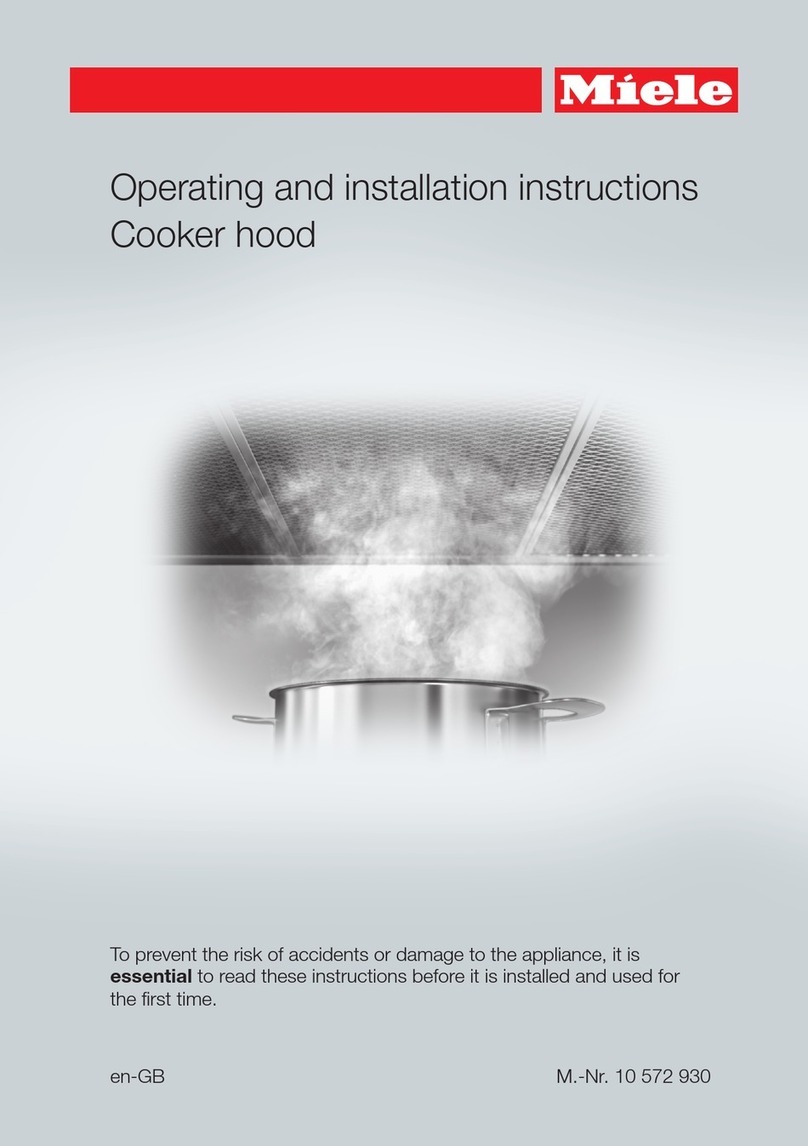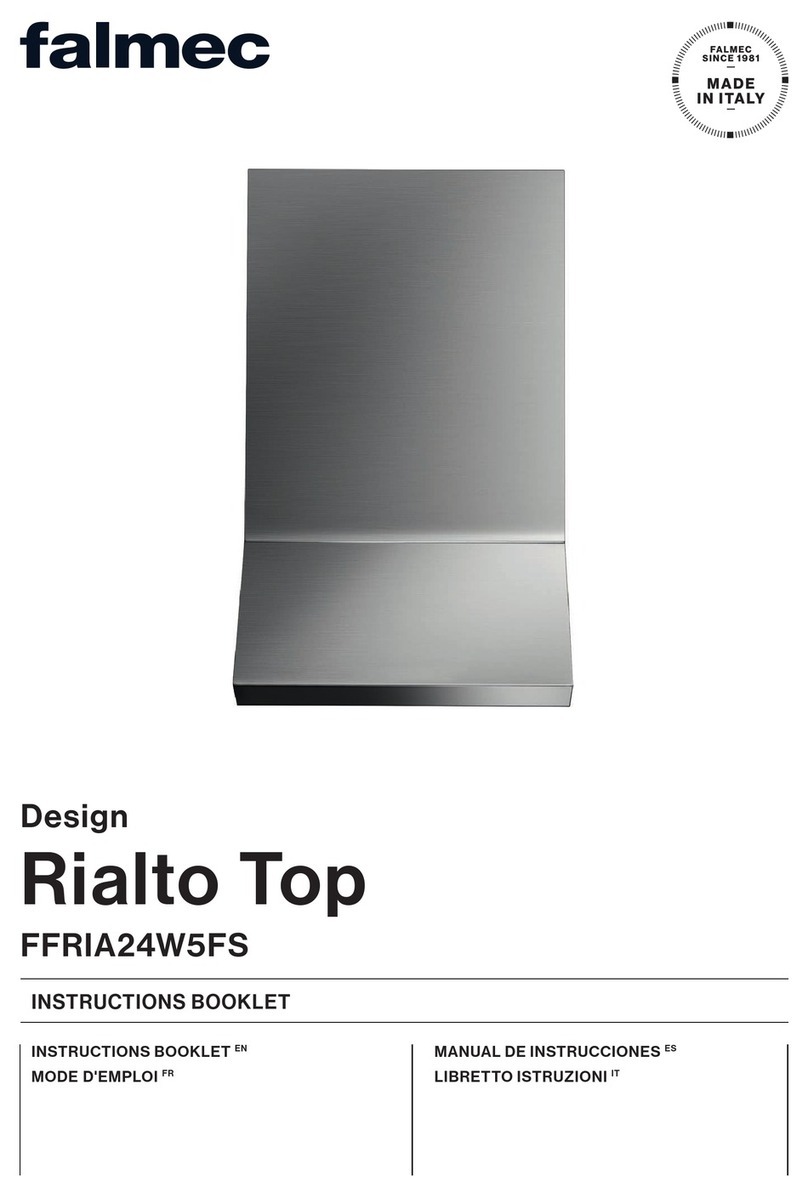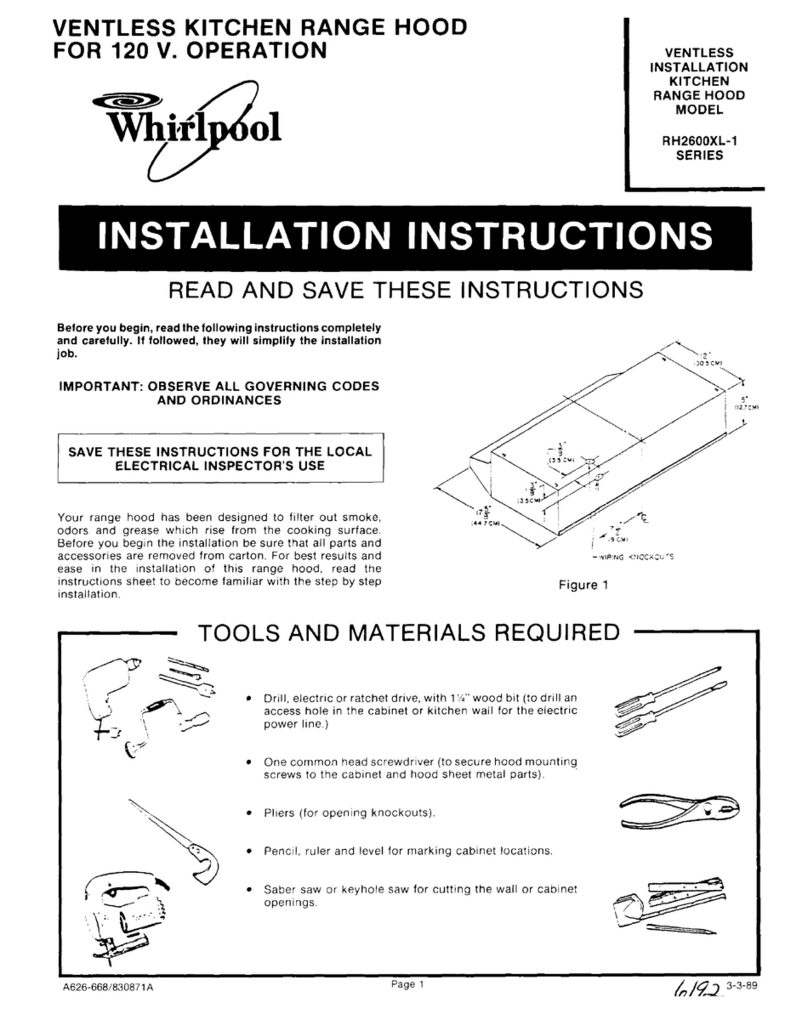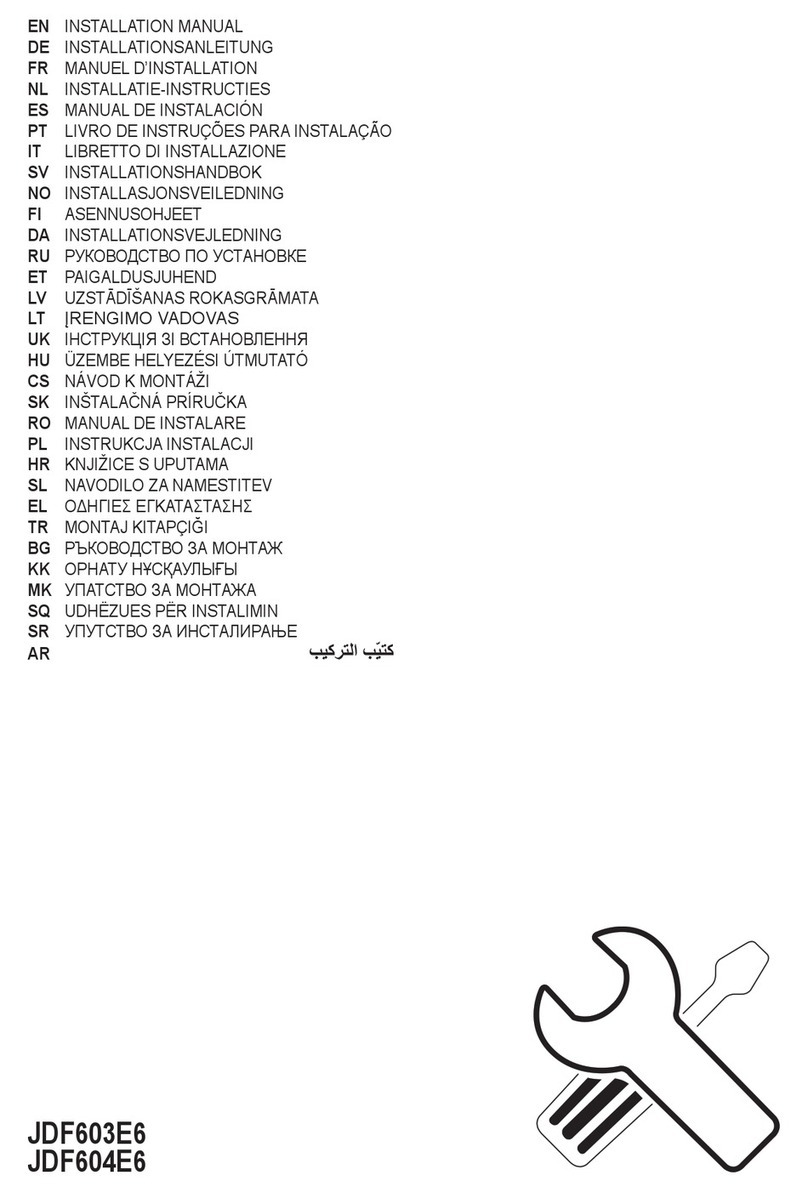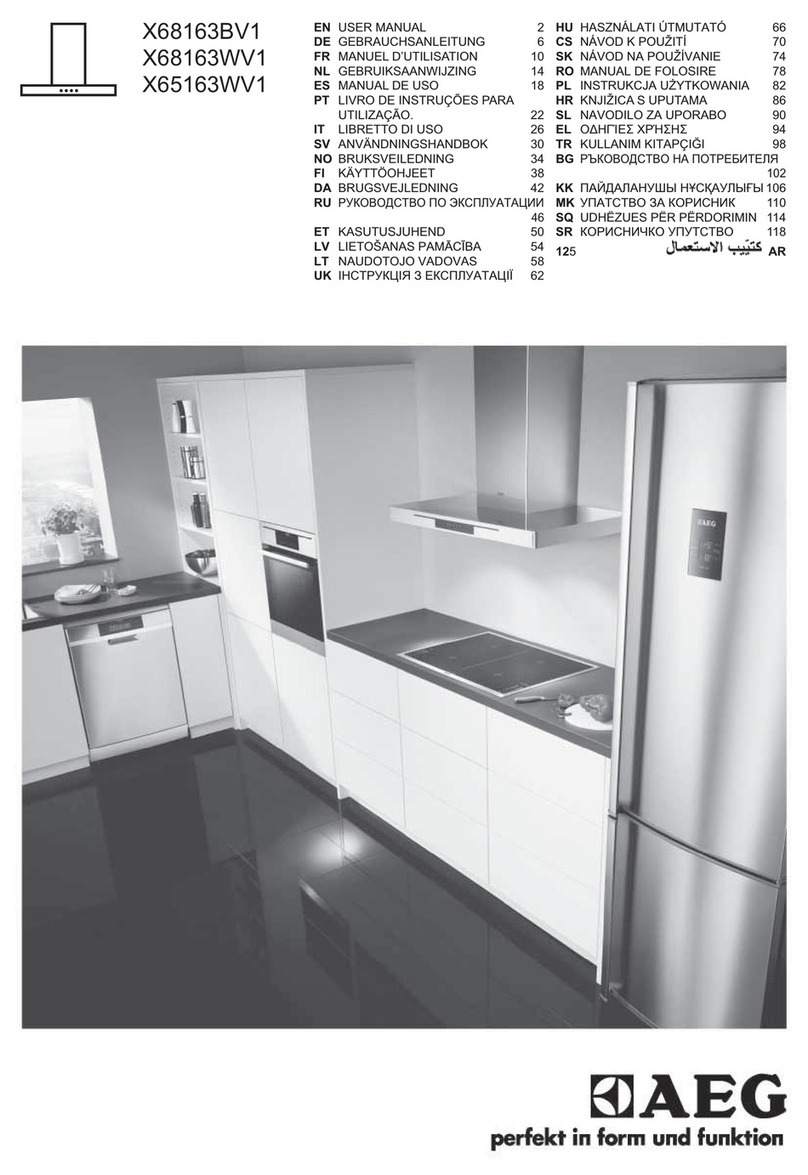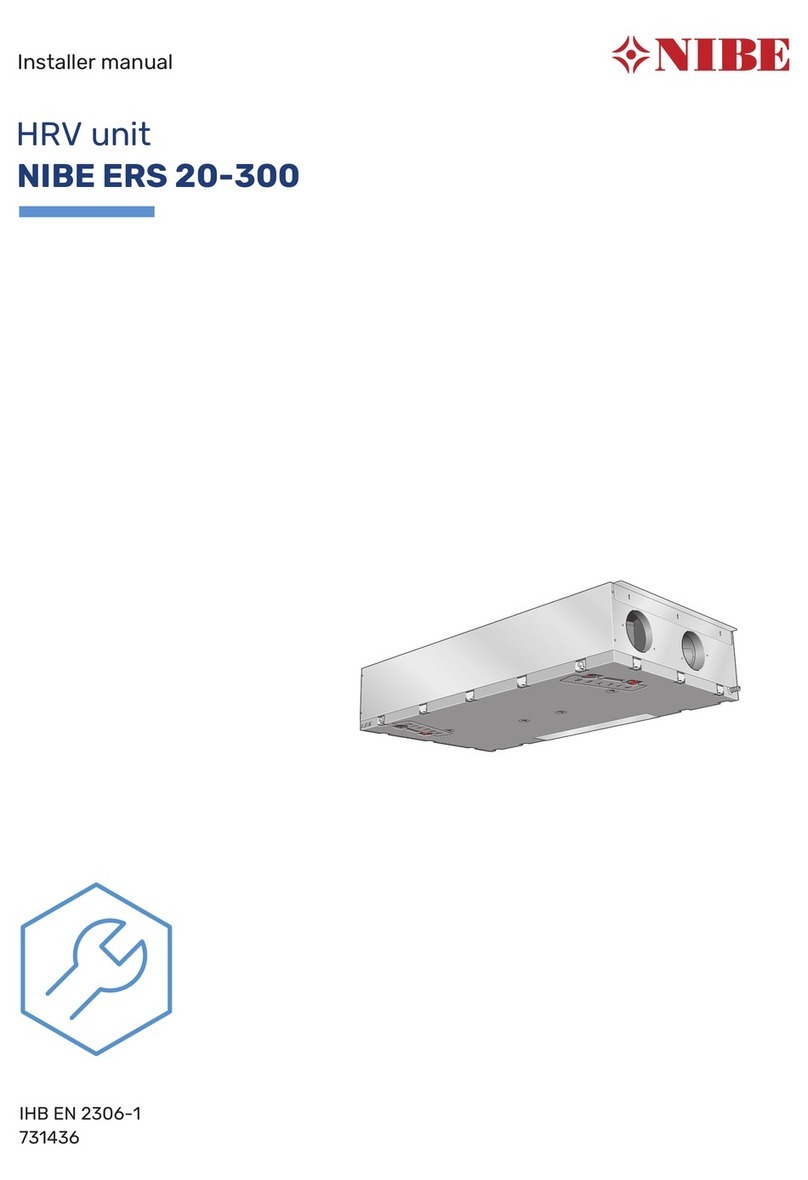
WARNING!
•Read the instructions carefully before installing and/or using the hood.
•Before connecting, make sure that the mains voltage corresponds to the voltage on
the rating plate inside the hood. (see fig. 7)
•Once you remove the appliance from its packaging make sure it is intact. If the
product is damaged, do not use it and contact the Smeg assistance network.
•It is recommended that a qualified technician performs installation and adjustment
operations .
•Before carrying out any kind of maintenance or cleaning, disconnect the hood from
the mains supply.
•Inspect and clean the filters thoroughly and in accordance with the intervals
suggested by the manufacturer.
•Do not cook or fry in a way that could result in flames being sucked into the hood and
causing a fire.
•The hood surface can be cleaned with a damp cloth and a non-bleach liquid
detergent.
•THE MANUFACTURER CANNOT BE HELD RESPONSIBLE IF THE ABOVE
INSTRUCTIONS ARE NOT FOLLOWED
INSTALLATION INSTRUCTIONS:
The hood is supplied with all the necessary
accessories for installation.The minimum distance
between the cooker and the lower part of the hood
must be 750 mm for gas cookers and 650 mm for
electric cookers (Fig. 1). The hood is supplied with a
motor intake (Fig 2). If it has not been assembled by
the manufacturer, you can assemble it using the
supplied screws (for type 1) or pushing (for type 2)
If the motor intake is equipped with a non-return
valve, make sure it opens and closes perfectly.
The following instructions will assist installation:
a) The hood should be centred with respect to the
cooker.
The hood is supplied with two supports/hooks (a)
(Fig 3) or bracket (b) that need to be fixed to the
wall by means of wall anchors . The L1 holes for
these supports are on the back of the hood (fig.
4)
Remove the anti-grease filters, put the hood on
the wall and mark the position of the holes for the
supports/hooks.
d) Drill the two previously marked holes after
removing the hood from the wall.
e) Fix the two supports/hooks to the wall.
f) Mark the L2 holes on the wall to fix the hood
safely. (fig. 4) Drill and put the anchors in the
holes.
g) Hang the hood on to the supports/hooks (fig. 5)
and level by means of the adjusting screw
(fig.3).
l) Fix the hood safe by tightening both wall anchors.
Ducted mode or Recirculation mode installation:
Ducted mode:
In the ducted mode, connect the motor outlet to the
fumes outlet duct not less than 120mm diameter.
Warning: if the hood is equipped with an active
carbon filter, it must be removed (see page 7)
02
There shall beadequate ventilation of the room when therange hood is used at thesame time
as appliances burning gas or other fuels. (Not applicable to appliances that only discharge the
air back into the room).
There is a risk of fire if cleaning is not carried out in accordance with the instructions.
Do not flambé under the range hood.
Caution: accessible parts may become hot when used with a cooking appliance.
The appliance is not intended for use by persons (including children) with reduced physical,
sensory or mental capabilities, or lack of experienceand knowledge, unless they have been
given supervised or instruction concerning use of the appliance by a responsible person for
their safely.
Young children should be supervised to ensure that they do not play with the appliance.
If the supply cord is damaged, it must be replaced by the manufacturer or its service agent or a
similarly qualified person in order to avoida hazard.
The exhaust air must not be discharged into a flue which is used for exhausting fumes from
other appliances burning gas or other fuels. (Not applicable for appliances which only discharge
air back into the room)
The minimum distance between the supporting surface for the cooking vessels on the hob and
the lowest part of the range hood:
When the range hood is located above a gas appliance, this distance shall be 65cm. If the
instructions for the installation for the gas hob specify a greater distance, this must betaken
into account. (the distance of 65 cm can be reduced for non-combustible parts of range hood
and part operating at safety extra lowvoltage provided these parts do not give access tolive
parts. Distance may be reduced to 60cm to alignwith the AGA code.
Regulation concerning the discharge of air have to be fulfilled.
WARNING: Failure to install the screws or fixing device in accordance with the instructions may
result in electrical hazards.
EN 01
